After years of dreaming and months of planning, it was Time for Africa and we were pretty excited when we landed at the Jomo Kenyatta International Airport. We had no bags to check-in, so we collected our duffel bags and climbed down the steps on to the tarmac. Most of the safari trips start in Nairobi, Kenya’s capital and we saw a few already in their safari gear – both, young and old and a few families. We lined up to the Immigration booth and showed our eVisa and were promptly picked up by our Safari guide from Angama Safari. We had only 2 days and here are the best things to Do in Nairobi, or rather things we did in Nairobi!
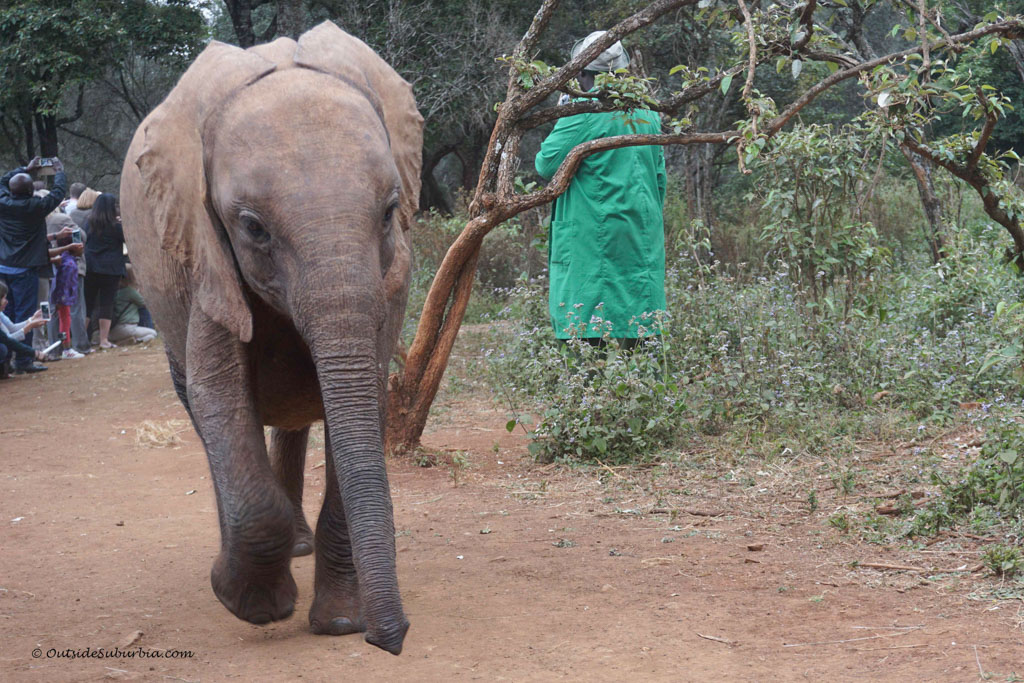
WHAT IS IN THIS POST
Best things to do in Nairobi, Kenya
Nairobi National Park
On the way to our hotel, our guide pointed to us, Kenya’s most accessible safari experience. Set on the city’s southern outskirts, Nairobi National Park (at 117 sq km, one of Africa’s smallest) has abundant wildlife that can, in places, be viewed against a backdrop of city skyscrapers and planes coming into land – it’s one of the only national parks on earth bordering a capital city. We didn’t go on a safari there but drove by it a couple of times and wondered how cool to have this wildlife so close to the city and still have their own space
David Sheldrick Wildlife Trust
Occupying a plot within Nairobi National Park, this nonprofit trust was established in 1977, shortly after the death of David Sheldrick, who served as the antipoaching warden of Tsavo National Park. Together with his wife, Daphne, David pioneered techniques for raising orphaned black rhinos and elephants and reintroducing them into the wild, and the trust retains close links with Tsavo for these and other projects. The center is one of Nairobi’s most popular attractions. They are only open at 11 am when visitors are escorted to a small viewing area centered around a muddy watering hole.
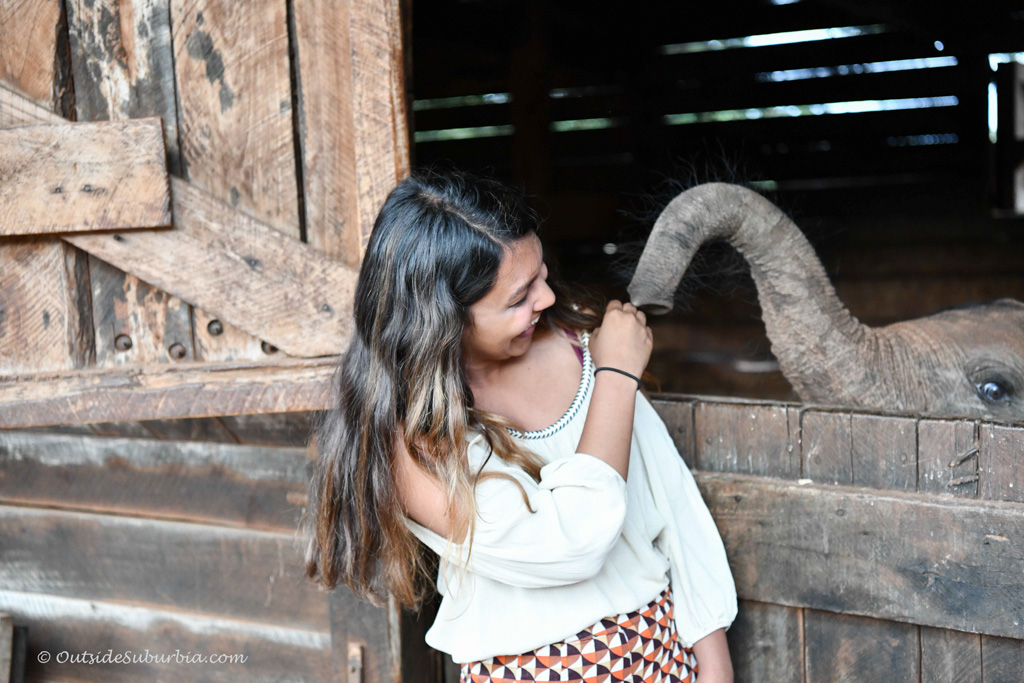
We saw a black rhino and watched baby tembos (Swahili for “elephants”) running back home to be fed and put to bed. A handler leads each of them into their stall and keeps it company, just as its mother would have. The handler who takes care of baby elephants feed them special milk and let them romp around in the mud while they share their stories. There’s also the opportunity to foster one of the elephants. For those who do, there’s a chance to visit when your elephant returns to the stockades around 5 pm every evening – advance bookings essential for this experience. When we learned about Davis Sheldrick Wildlife Trust and the amazing work they do, we just had to adopt one of the little babies. We got to visit him in the evening along with other little elephants in their nurseries, just fun to watch them play and interact. More details here.
Giraffe Center
You probably have seen pictures of Giraffe Manor on Instagram or other social media when the giraffes poke their heads into the breakfast room or your balcony. If you can’t afford to stay there you can still see the exact same Giraffes at the Giraffe center. This center protects the highly endangered Rothschild’s giraffe, combines serious conservation with enjoyable activities. You can observe, hand-feed or even kiss one of the giraffes from a raised wooden structure, which is quite an experience. You may also spot a few warthogs snuffling about in the mud. The Rothschild’s giraffe had been pushed to the brink of extinction by severe habitat loss in western Kenya. Today the population numbers more than 300, and the center has successfully released these beautiful creatures into Lake Nakuru National Park (home to around 45 giraffes), Mwea National Reserve, Ruma National Park, and Nasalot National Reserve.
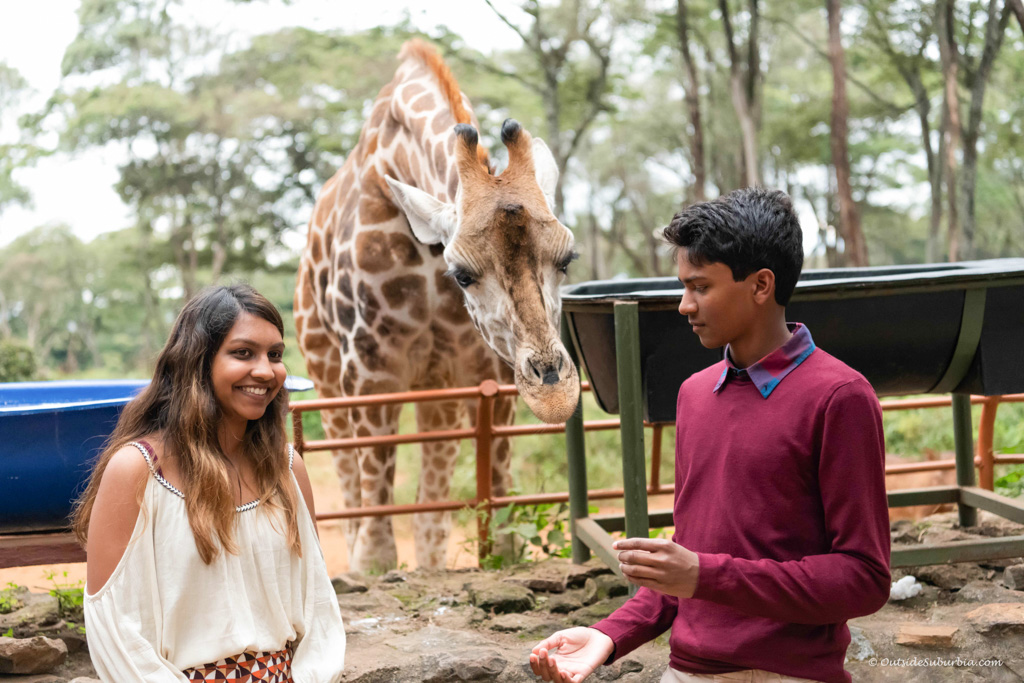
Karen Blixen’s House & Museum
If you loved Out of Africa, you’ll want to visit this museum in the farmhouse where author Karen Blixen lived between 1914 and 1931. She left after a series of personal tragedies, but the lovely colonial house has been preserved as a museum. Set in expansive gardens, the museum is an interesting place to wander around, but the movie was actually shot at a nearby location. Guides are included in the admission fee, and they can start the tour with Blixen’s story even if you have not read the book or seen the Hollywood version of it. See here for more photos from the Museum.
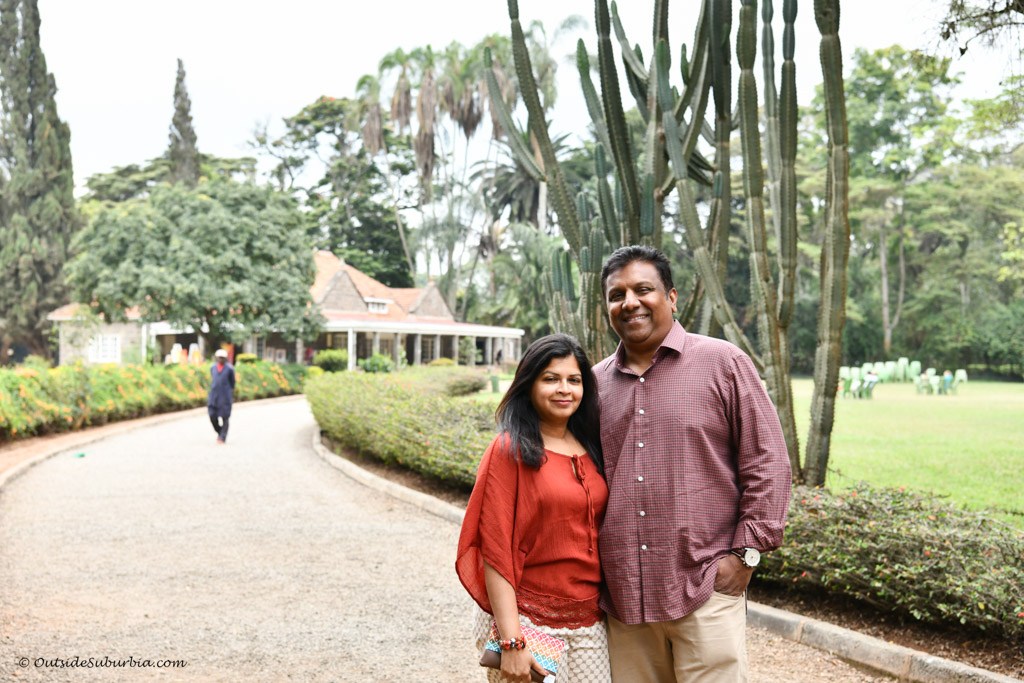
The Museum sits on a beautiful garden and you see the tractors and other equipment used by the coffee farm. Inside the house, you can see Blixen’s kitchen, her cuckoo clock that the Masai children came to see every day at noon and the patio where she sat down to prescribe medicine to the people.
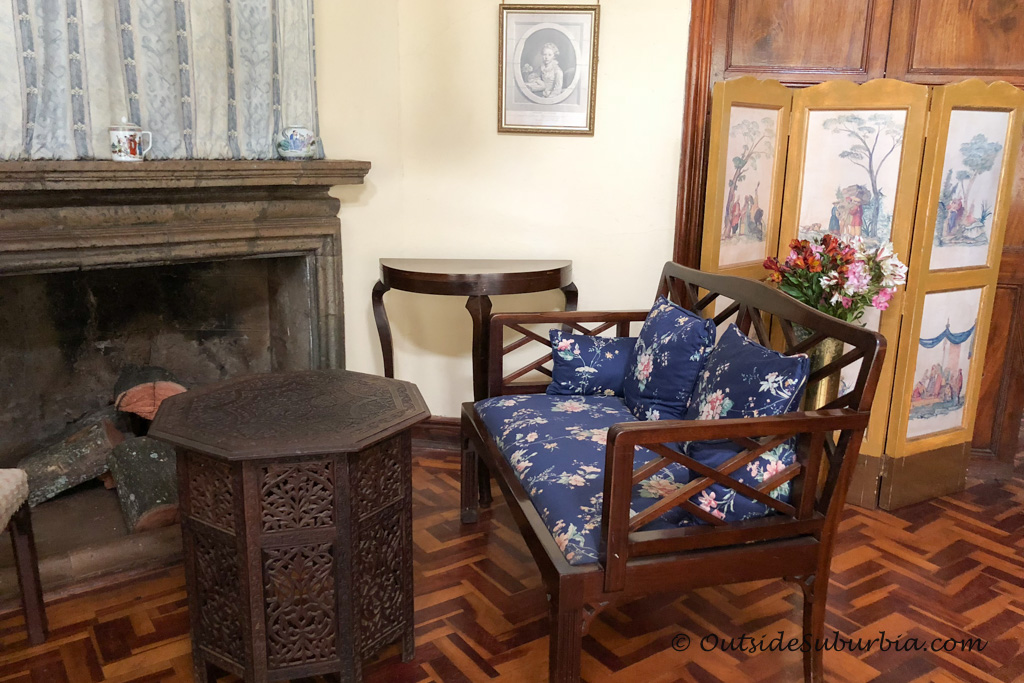
Nairobi National Museum
Situated on Museum Hill, a ten-minute drive from Nairobi CBD lies the Nairobi National Museum. The museum and its surroundings link to the four pillars of Kenya’s national heritage – nature, culture, history and contemporary art. The museum precinct includes not only the actual museum but an art gallery, botanical gardens, a snake park. Learn about the rich cultural heritage of Kenya and the archaeological origins of man, see the animals and birds of Africa in the galleries, appreciate contemporary Kenyan art, and then go for a stroll through the beautiful botanical gardens. If you’re brave, visit the snake park and get up close and personal with some of Africa’s reptiles.
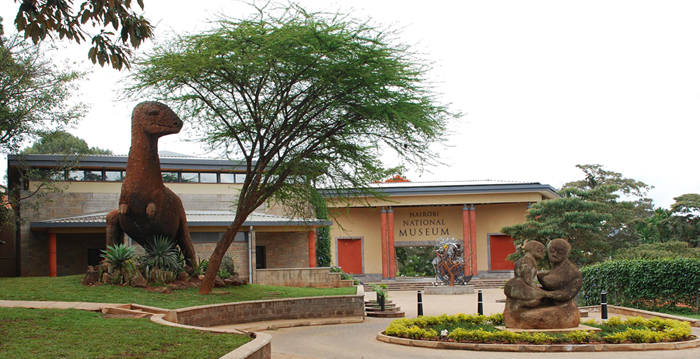
Kenya Railway Museum
The main collection here is housed in an old railway building and consists of relics from the East African Railway. There are train and ship models, photographs, tableware and oddities from the history of the railway, such as the engine seat that allowed visiting dignitaries like Theodore Roosevelt to take potshots at unsuspecting wildlife from the front of the train. In the museum grounds, there are dozens of locomotives in various states of disrepair, dating from the steam days to independence. You can walk around the carriages at your leisure. At the back of the compound is the steam train used in the movie Out of Africa. The museum can be reached by a long lane beside the old train station where the walls are filled with colorful murals.
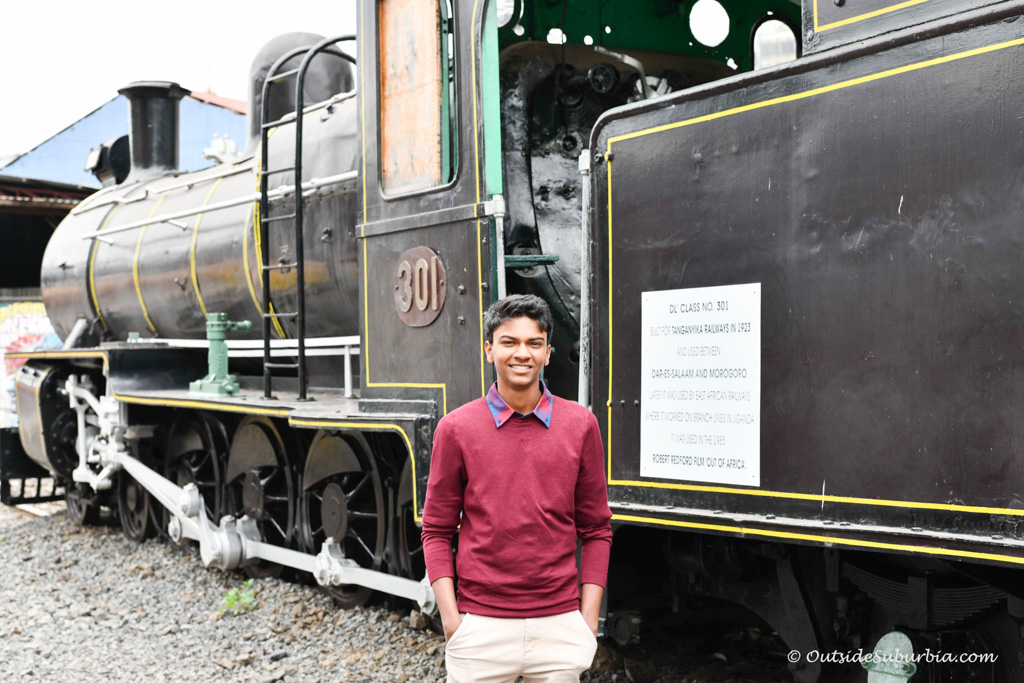
Where to Shop in Nairobi
You can get all your East Africa souvenirs at the Maasai Market that are held in different parts of the city on different days. At these open-air markets, you can find curios, paintings, drawings, clothes and fabrics with East African prints, jewelry and wood-carvings, many hand-made in Kenya by local artisans. Ask your guide or hotel for more details.
Kazuri
If you like beautiful ceramic beads and jewelry, you must visit Kazuri – which means “small and beautiful” in Swahili. It began in 1975 as a tiny workshop experimenting in handcrafted ceramic beads and now has grown tremendously. It now has a large workforce of over 340 women skilled in the crafting of ceramic beads, strung into beautifully and artistically jewelry. Its founder started with two single motherhood women and soon discovered that there were many others in the villages around Nairobi, most of who were disadvantaged and were in great need of regular employment. You can walk around the factory and see how these women try clay into pieces of art. The finished products in hot colors of fiery sunsets, ocean blues, and patterns of hooves and spots will be a keepsake you cherish forever. I brought home a few in shades of red and gold to remind me of the colors of this beautiful land.
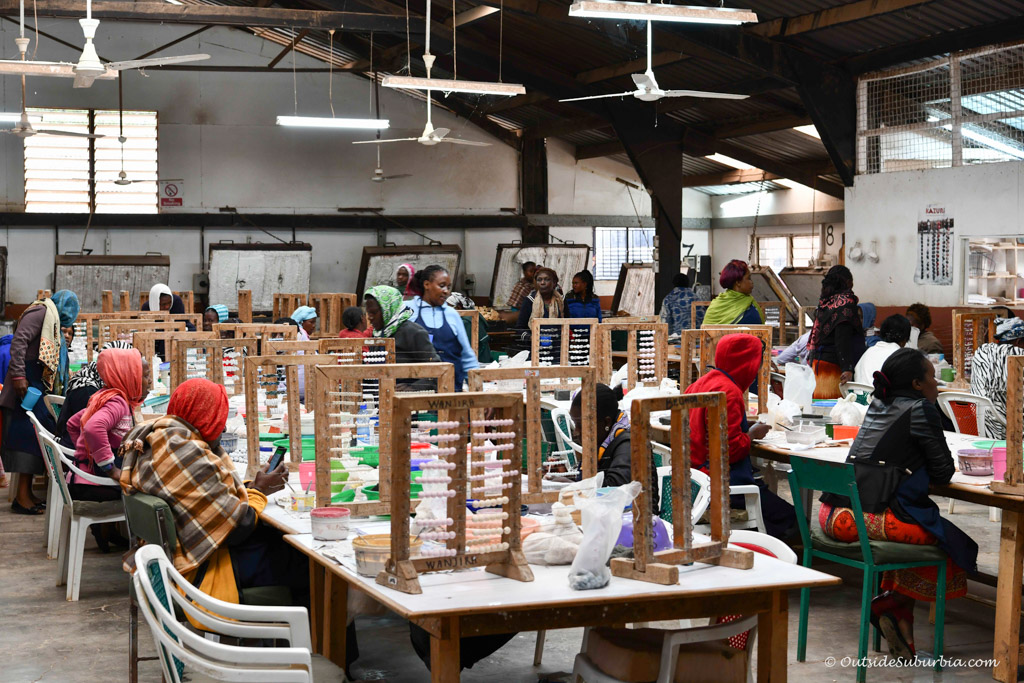
MatBronze
More than 600 wildlife bronzes by Denis Mathews -from jewelry and small lion-cub-footprint dishes to much larger pieces running into thousands of dollars make MatBronze another great place to shop in Kenya. All the pieces are produced at the on-site foundry and every piece is a work of art. There is also a small cafe serving light meals on the beautiful garden filled with more sculptures.
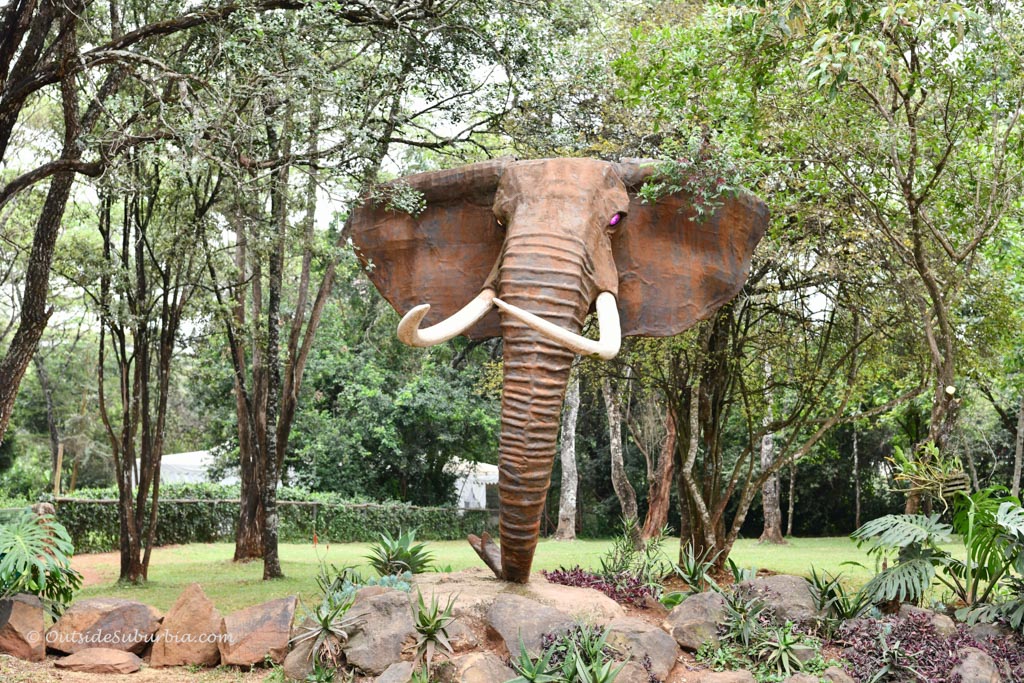
Where to eat in Nairobi
The staple and most common food in Kenya is a cornmeal starch made into a thick paste known as ugali. It is heavy and hearty and goes down well with fried vegetables or any kind of meat or vegetable stew. Chapatis – the Indian flatbread is another staple we found everywhere from restaurants to safari camps. Nyama Choma is the East African style of roasted or bbq meat. Meat or chicken is slow-roasted over coals with nothing more than salt. The meat is often eaten plain and dipped in more salt or accompanied by chilies and a tomato salsa known as kachumbari.
Carnivore
While I’m not a big meat eater, the Carnivores in the family aka the boys wanted to try the Carnivore which serves up Kenya’s most famous Nyama Choma. It’s been an icon for tourists, expats and well to do locals for over 25 years. At the entrance is a huge barbecue pit laden with real swords of beef, pork, lamb, chicken and farmed game meats such as crocodile and ostrich. There had a separate vegetarian menu and the stir fry noodles that I ordered were pretty good. It was a memorable night with local music occasional dances by the staff while the gang had a beast of a feast and had some exotic meats. Our guide told us that in recent years, because of strict new hunting laws, zebra, kudu and the like are now off the menu, but you can get ostrich, crocodile or camel which are raised in the farms nearby.
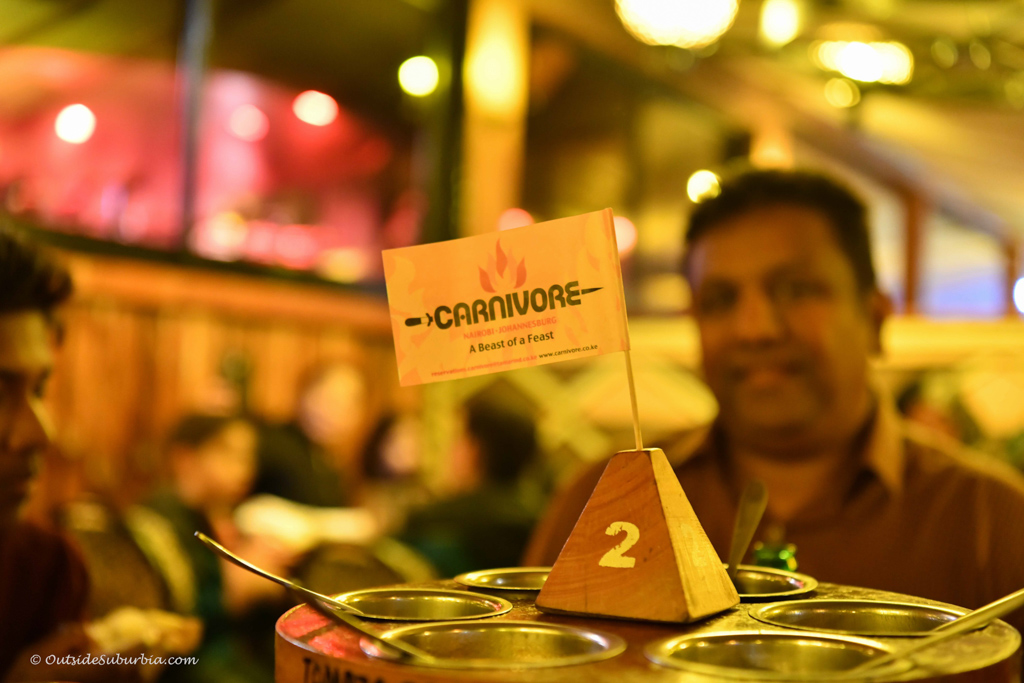
Tamambo
Tamambo in Karen is where we stopped for lunch after visiting the Karen Blixen Museum. It is located on a beautiful garden on Karen road about half a mile from the Karen Golf course and country club. It was a little chilly out in the garden, but we had a heater and some plaid shuka, the colorful Maasai blankets to keep us warm. The place had a colonial vibe and service, food and atmosphere were lovely.
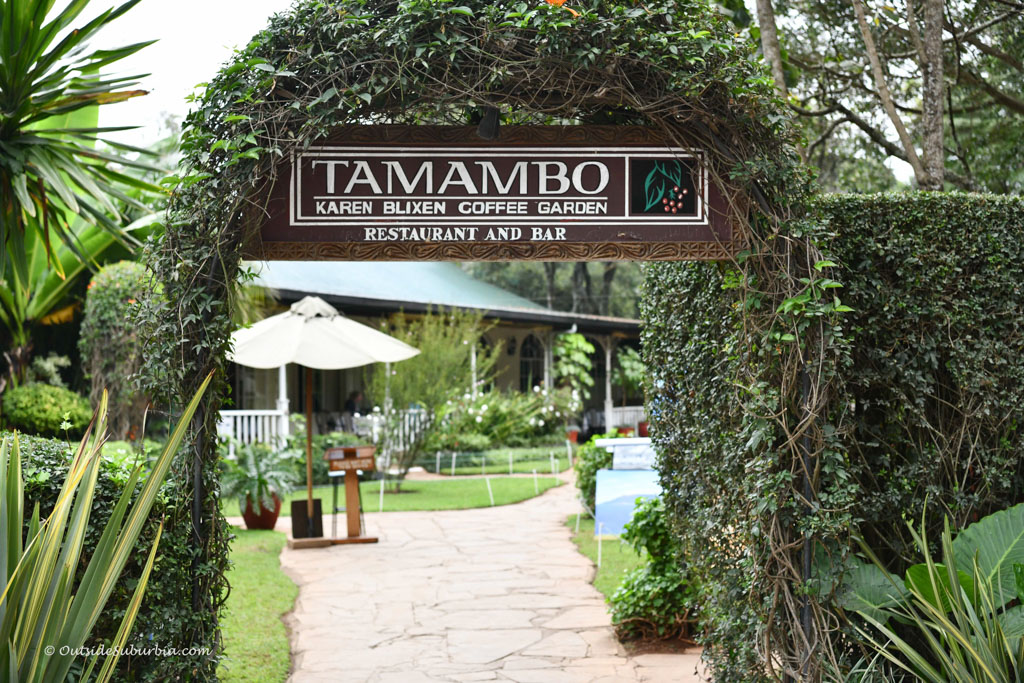
Where to stay in Nairobi
We stayed for 2 nights at the Villa Rosa Kempinski in Nairobi. We were greeted with warm towels and refreshing passion juice on arrival. We had two adjoining rooms that were beautiful and spacious and had a view of the city from the balcony. We had dinner one night at Lucca and it did not disappoint. We ordered room service desserts since we were a little jet-lagged.
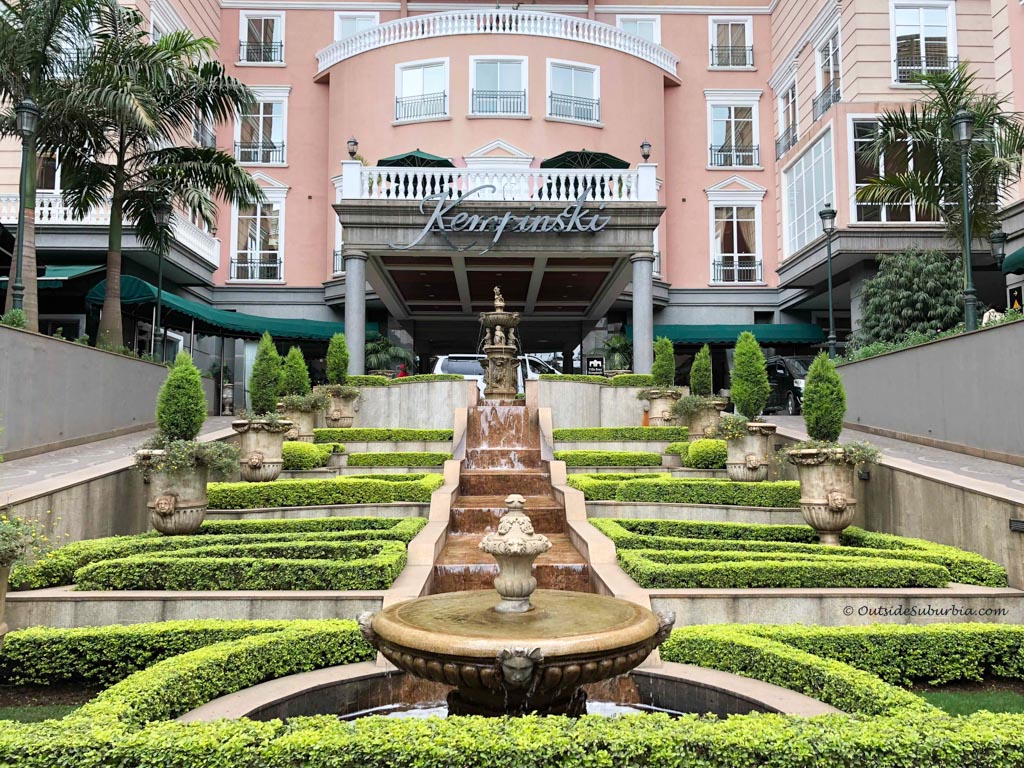
Hemingway’s Hotel in the Nairobi suburb of Karen is another great choice if you don’t mind being away from the city center. It is in a peaceful location and closer to the Giraffe Center and Karen Blixen museum. You can also go there for a relaxing lunch on their terrace overlooking their extensive garden.
Staying at Giraffe Manor is another great option if you can afford it – it’s not very often you can see Giraffes poking their head into your room. Once in a lifetime experience for the kids for sure. Make sure you book early, a year early since they are pretty popular and get booked.
You might also like:
Photo from the Great Migration in Masai Mara
Hot Air Balloon Safari in Serengeti
Four Seasons Safari Lodge Review
Angama Mara Luxury Lodge Review
Other posts from Africa
PIN IT FOR LATER
Note: This post may contain affiliate links, partnership or sponsored content. If you purchase an item via one of these links, we may receive a small commission at no extra charge to you. But as always images and opinions are our own. For more information on our affiliates and privacy policy at Outside Suburbia see here.
CONNECT WITH US

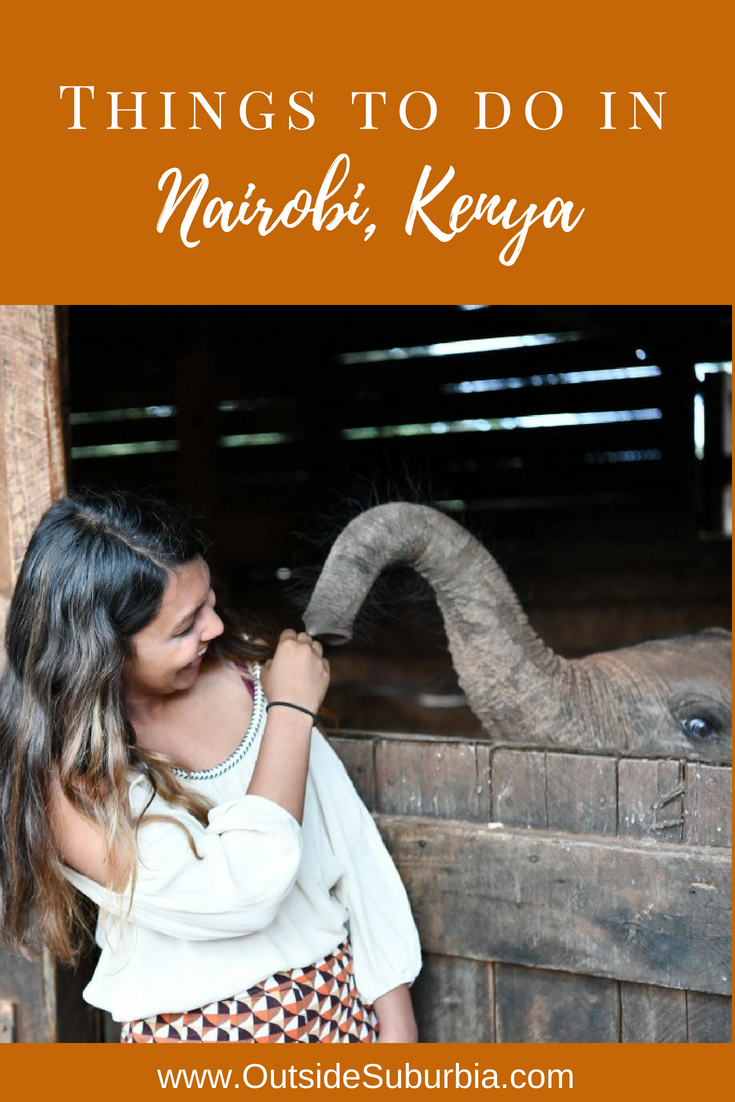
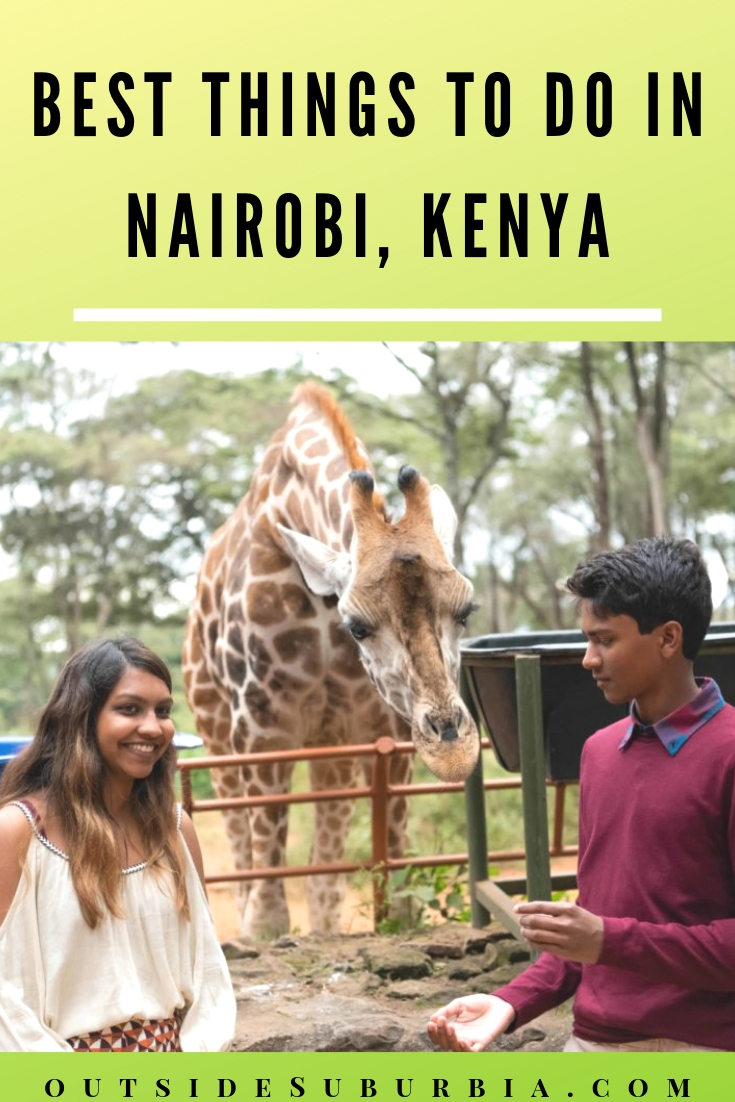
It was really insightful.
Thanks for such a nice content.
Cheers
This is a great list of places to visit while in Nairobi. I’m sure you had a great time exploring the area and discovering what there is to love about it. I, personally, would love to get to go to the Giraffe Center. Were you also able to visit the bazaars and flea markets? I hear their great places to go to if you’re on the hunt for local products. I also heard that Nairobi is also known to be the “African city that never sleeps”, I think it has something to do with the nightlife in town. A short stop in Nairobi would definitely be a good way to enjoy nature and a good time in town.